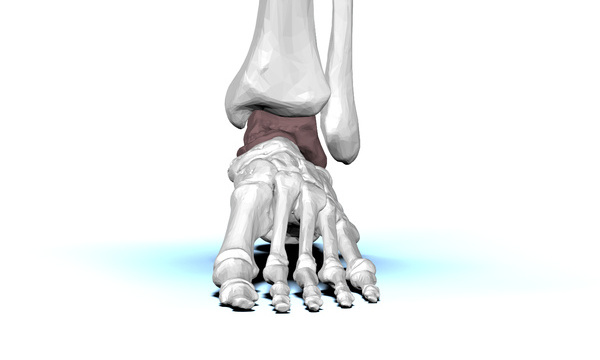by Susan Lawrence, PT
We’ve all done it – gone over on our ankles whether running, playing a sport or stepping off a curb the wrong way. It’s painful, it swells … it’s embarrassing – you try and “walk it off”. Say you do all the right things to make it better—the initial RICE (rest, ice, compression and elevation), you even add the “P” (protection) to the acronym, but weeks, months, maybe years after, it still just doesn’t feel right.Your balance is a little off on that leg, it may be painful to fully turn it inward or when you squat. Now you are told or you assume you have a “weak ankle”—the ligament just didn’t heal.
Think again! New research is finding that it’s not so much the ligament healing that is the problem but the ankle joint itself. The ligament, depending on the severity of the strain will heal anywhere from a couple of weeks to just over two months.
The ankle joint is comprised of the Talus, an irregular shaped bone with a dome that sits between the lower specialized ends of the lower leg bones, the Tibia and Fibula. Together they make the inverted dome shape for the Talus to sit in. When we go over on our ankle not only can you sprain the ligament that holds the bones securely but quite often the lower end of the Fibula is shunted forward so it is no longer sitting exactly right in the joint—a positional fault has occurred1, NOT a Dislocation (when the bone comes completely comes out of joint) NOR a Subluxation (when the bone comes partially out). Nothing as severe as either of those two scenarios. However, the bone is not seated correctly (not lined up enough), throwing off the normal feedback loops and control mechanisms of the ankle so your balance and mobility are adversely affected.
Well, as bad as that may sound, help is at hand. There is an easy, painfree physical therapy maneuver developed by the New Zealand Physical Therapist Brian Mulligan, FNZSP (Hons), Dip MT. It uses his famous Mobilization With Movement techniques, which reposition the Fibula. Once it is back in the groove so to speak, your ankle will function normally again even after months or years of pain, discomfort or disability2.
If you or a loved one, friend, tennis partner, etc., has been complaining about this problem, give me a call and let’s see if we can fix this.
References:
1. Is there a positional fault at the Tib-Fib joint in patients with acute or ankle sprains compared to normals? Arthur J Kavanaugh 1999, Manual Therapy 4 (1) 19-24,
Anterior positional fault of the Fibula after subacute lateral ankle sprain . T Hubbard 2016, Manual Therapy, doi:10 .1016/j.math.2006.09.008
2. Effects of Mobilization With Movement on ankle Dorsiflexion range of motion, dynamic balance and self reported function in individuals with chronic ankle instability. J P Galbraith 2016, Man Ther 2014 April, 19(2): 152-7
Susan Lawrence, PT, has over 20 years of experience in outpatient orthopedic care, including Back & neck pain; Headaches; Sports Injuries; and Pre- & Post-op Rehab. Contact her by email or by phone at 443-515-1090.

